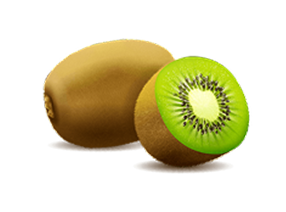The science
behind DAD & ME®


Our kids nutritional milk contains our special Me3
support system which combines our natural ingredients
to provide optimum support for:
1) Growth & Me

Supporting growth and height through Colostrum Basic Protein, Milk Proteins and Calcium for strong bones
2) Immunity & Me

Ensuring your little human stays healthy through lactoferrin, probiotics and blueberries
3) Vision & me

Promoting eye and brain development through kiwifruit, lutein and vitamin A
1. GROWTH & ME
Ensuring your child’s growth and development is one of the most important things you can do as a parent.
Dad & Me® is formulated with science-backed ingredients to support your child’s healthy growth, bone development, and overall well-being.
Packed with essential nutrients like Colostrum Basic Protein (CBP), Calcium, and key vitamins, our product provides the foundation your child needs to grow strong and healthy.
CBP (Colostrum Basic Protein)
CBP is a rare, functional protein extracted from bovine colostrum and also found in breast milk. This powerful protein supports bone and muscle development while promoting healthy growth.
Naturally present in CBP:
- Lactoferrin: Supports immunity and reduces inflammation.
- Immunoglobulins (IgG): Enhance immune function.
- Growth Factors (like IGF-1): Promote cell growth and repair.
- Essential Amino Acids: Aid in healthy development.
With only 4 grams of CBP extracted from every 10 kilograms of colostrum, this makes it a concentrated and powerful ingredient for growing children.
Dad & Me® contains 100mg of CBP per 100g, rich in the growth factors, amino acids, and immunoglobulins needed to help support strong bones, muscles, and overall healthy growth.

Other Key Vitamins and Minerals
Dad & Me® is packed full of other key minerals and vitamins to help with growth including:
- Vitamin D: Enhances calcium absorption, supporting strong bones and healthy bone mineralisation.
- Vitamin K: Works with calcium to regulate bone mineralisation, ensuring proper bone development.
- Magnesium: Aids in bone and muscle formation and helps the body utilise calcium effectively.
- Iron: Important for brain development and the production of red blood cells, supporting healthy cognitive function.
- Zinc: Supports cell growth and development, playing a key role in overall growth and immune function.

2. IMMUNITY & ME
Building a strong immune foundation early on is one of the greatest
gifts you can give your child.
Dad & Me® is thoughtfully crafted with science-backed ingredients like
lactoferrin, probiotic HN019, and blueberries to naturally support your
child’s immunity from the inside out.


Nature’s
Immune
Guardian
Lactoferrin is a powerful protein found in both cow’s milk and breast milk. It is known for its ability to support and strengthen the immune system.
- 100mg per 100g of Dad & Me® to help defend against viruses and bacteria
- Supports immune cell activity (like macrophages and NK cells)
- Helps maintain a strong gut lining, reducing inflammation
- Encourages growth of healthy gut bacteria
- Clinically shown to support immune system development in young children
Probiotic HN019: Gut Health That Protects
Probiotic HN019 (Bifidobacterium lactis) is a well-studied strain sourced from healthy individuals, proven to enhance both digestion and immune defense.
- 8 billion active cultures per 100g
- Supports gut microbiota balance
- Boosts immune cell function and gut barrier strength
- Survives stomach acid to deliver benefits where they matter most
- Backed by multiple clinical studies on immunity in children


Blueberries: Antioxidant Powerhouses
Blueberries provide a natural boost in antioxidants and vitamin C, two essential elements of a healthy immune system.
- Naturally rich in vitamin C, vitamin K1, and manganese
- Packed with anthocyanins, powerful plant compounds that protect cells
- Supports immune resilience and overall wellness

3. VISION
& ME 
Nurturing eyesight
from the inside out
A child's eyes develop rapidly in the early years. From focusing and light adaptation to long-term retinal health, their vision needs targeted nutritional support. That’s why Dad & Me® includes natural, science-backed ingredients to protect and strengthen young eyes, helping your little human see the world clearly today and in the years to come.

Lutein: Eye Health and Brain Support
Lutein is a yellow carotenoid naturally found in the retina, particularly in the macula. It plays a key role in:
- Filtering harmful blue light from screens and sunlight
- Providing antioxidant protection against cell damage
- Maintaining macular health and visual sharpness
- Reducing inflammation in the eyes
Lutein delivers this essential nutrient in a natural, effective form to support developing vision.

Kiwifruit: Natural Support for Growing Eyes
Kiwifruit is packed with nutrients essential for eye health:
- Lutein and zeaxanthin, concentrated in the retina to protect against damage and vision loss
- Vitamin C, an antioxidant that helps prevent cataracts and oxidative stress
- Vitamin E, supporting eye tissue repair and cellular health
These nutrients help defend against free radicals and preserve long-term visual function in growing little humans.

Blueberry: Antioxidant-Rich Brain and Eye Fuel
Blueberries are rich in anthocyanins, powerful plant compounds that:
- Protect the small blood vessels in the eyes
- Support regeneration of retinal cells
- Improve night vision and light adjustment
- Reduce the risk of macular degeneration and cataracts
By promoting resilience and clarity, blueberries help protect your little human’s eyesight in today’s demanding visual environment.
References 
- Gill, H. S., Rutherfurd, K. J., Cross, M. L., & Gopal, P. K. (2001). Enhancement of immunity in the elderly by dietary supplementation with the probiotic Bifidobacterium lactis HN019. American Journal of Clinical Nutrition, 74(6), 833–839. https://doi.org/10.1093/ajcn/74.6.833
- Gill, H. S., Rutherfurd, K. J., Cross, M. L., & Gopal, P. K. (2001). Enhancement of natural immune function by dietary consumption of Bifidobacterium lactis (HN019). European Journal of Clinical Nutrition, 55(9), 714–719. https://doi.org/10.1038/sj.ejcn.1601198
- Shu, Q., Lin, H., Rutherfurd, K. J., Fenwick, S. G., Prasad, J., Gopal, P. K., & Gill, H. S. (2000). Dietary Bifidobacterium lactis (HN019) enhances resistance to oral Salmonella typhimurium infection in mice. Microbiology and Immunology, 44(4), 213–222. https://doi.org/10.1111/j.1348-0421.2000.tb02501.x
- Lee, J. R., Kim, H. M., Choi, H. S., & Hong, J. H. (2007). Effects of colostrum basic protein from colostrum whey protein: Increases in osteoblast proliferation and bone metabolism. Preventive Nutrition and Food Science, 12(1), 1–6. https://doi.org/10.3746/pnf.2007.12.1.001
- Ichikawa, F., Sato, K., Nanjo, M., Nishii, Y., Shinki, T., Takahashi, N., & Suda, T. (1995). Mouse primary osteoblasts express vitamin D₃ 25-hydroxylase mRNA and convert 1α-hydroxyvitamin D₃ into 1α,25-dihydroxyvitamin D₃. Bone, 16(1), 129–135. https://doi.org/10.1016/8756-3282(94)00012-I
- Ma, L., & Lin, X. M. (2010). Effects of lutein and zeaxanthin on aspects of eye health. Journal of the Science of Food and Agriculture, 90(1), 2–12. https://doi.org/10.1002/jsfa.3785
- Stringham, J. M., & Hammond, B. R. (2005). Dietary lutein and zeaxanthin: possible effects on visual function. Nutrition Reviews, 63(2), 59–64. https://doi.org/10.1301/nr.2005.feb.59-64
- Krinsky, N. I., Landrum, J. T., & Bone, R. A. (2003). Biologic mechanisms of the protective role of lutein and zeaxanthin in the eye. Annual Review of Nutrition, 23, 171–201. https://doi.org/10.1146/annurev.nutr.23.011702.073307
- Rodriguez-Mateos, A., Rendeiro, C., Bergillos-Meca, T., Tabatabaee, S., George, T. W., Heiss, C., & Spencer, J. P. E. (2013). Intake and time dependence of blueberry flavonoid-induced improvements in vascular function: a randomized, controlled, double-blind, crossover intervention study with mechanistic insights into biological activity. The American Journal of Clinical Nutrition, 98(5), 1179–1191. https://doi.org/10.3945/ajcn.113.066639
- Kalt, W., Blumberg, J. B., McDonald, J. E., Vinqvist-Tymchuk, M. R., Fillmore, S. A. E., Graf, B. A., O'Leary, J. M., & Milbury, P. E. (2008). Identification of anthocyanins in the liver, eye, and brain of blueberry-fed pigs. Journal of Agricultural and Food Chemistry, 56(3), 705–712. https://doi.org/10.1021/jf072568e
- Nakaishi, H., Matsumoto, H., Tominaga, S., Hirayama, M., & Nakamura, S. (2000). Effects of bilberry anthocyanins on retinal function in patients with normal tension glaucoma. Alternative Medicine Review, 5(6), 553–562.
- Sommer, A. (2008). Vitamin A deficiency and clinical disease: an historical overview. The Journal of Nutrition, 138(10), 1835–1839. https://doi.org/10.1093/jn/138.10.1835
- West, K. P. Jr. (2002). Extent of vitamin A deficiency among preschool children and women of reproductive age. The Journal of Nutrition, 132(9 Suppl), 2857S–2866S. https://doi.org/10.1093/jn/132.9.2857S
- Tanumihardjo, S. A. (2011). Vitamin A: biomarkers of nutrition for development. The American Journal of Clinical Nutrition, 94(2), 658S–665S. https://doi.org/10.3945/ajcn.110.005777

